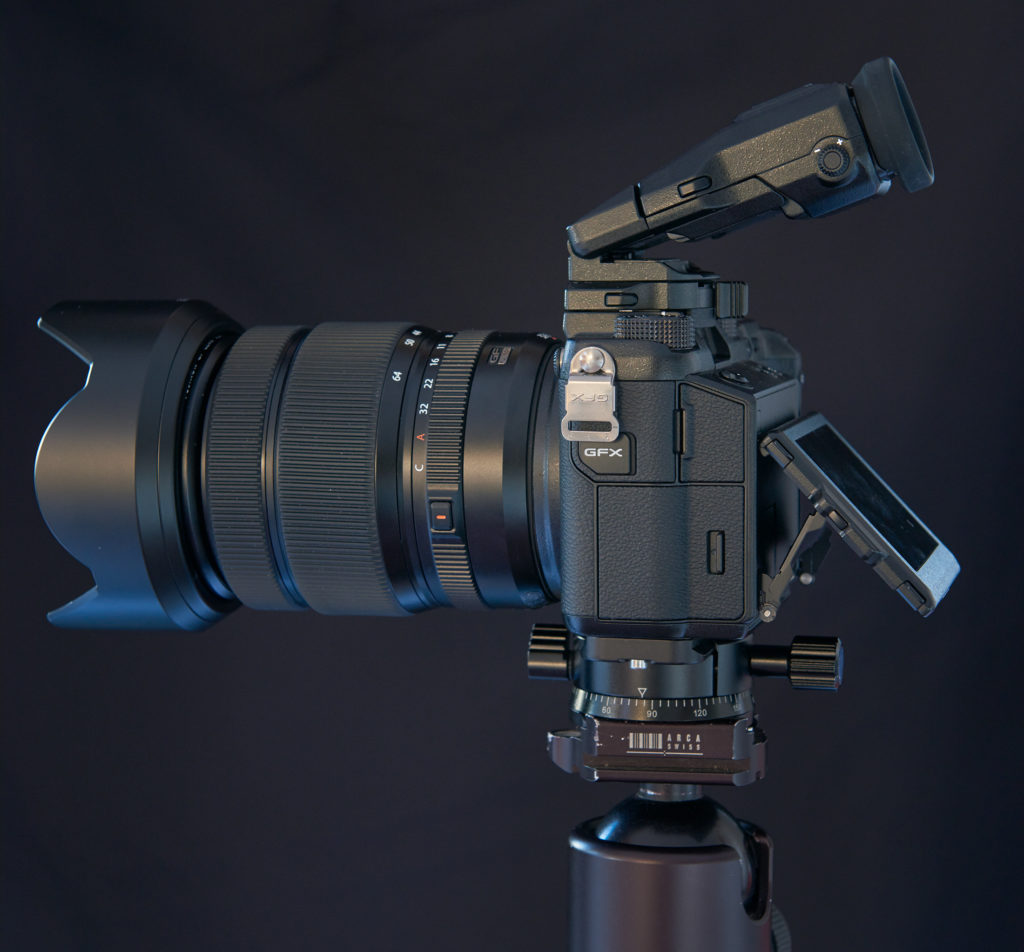
Regular readers of this blog will know that I am lusting for larger formats. This is, of course, a matter of personal preference that results from my established shooting style and two Linhof view cameras waiting for a second life. In the film days the situation was easy; bigger was better. But in the digital world not everything scales with log2.
I could have created click bait by reviewing the hyped-up Hasselblad (X1D) and Fujifilm (GFX 50S) earlier, but wanted to wait until the initial bugs in the firmware are sorted out and Lightroom and/or CaptureOne support the RAW files. Now it’s about time to have a closer look because there is a new option: the 45 mega-pixel, Nikon D850 that is supposedly a leap further in almost all respects.
The question is if I would supplement my workhorse Nikon D810 with the D850 or replace it with a medium format system. There must be compelling reasons for a switch though; most importantly, an expanded shooting envelope in terms of handling and reliability (mainly high ISO capabilities and image stabilization), and image quality (resolution, dynamic range, and tonal separation).
The GFX 50S is Fuji’s smart move from a marketing standpoint. It does not compete with their own X line, but challenges Canikon’s full frames. The GFX is a flexible system with a line of new lenses and a focal-plane shutter allowing to shoot everything that can be attached, including the Zeiss Otus and the Nikon PC-E lenses that will (just) cover the large (44 x 33 mm), 51 MP CMOS sensor. There is also an adapter for the universal-type back of view-cameras. In this respect the Hasselblad X1D is completely outperformed because it doesn’t have a focal plane shutter.
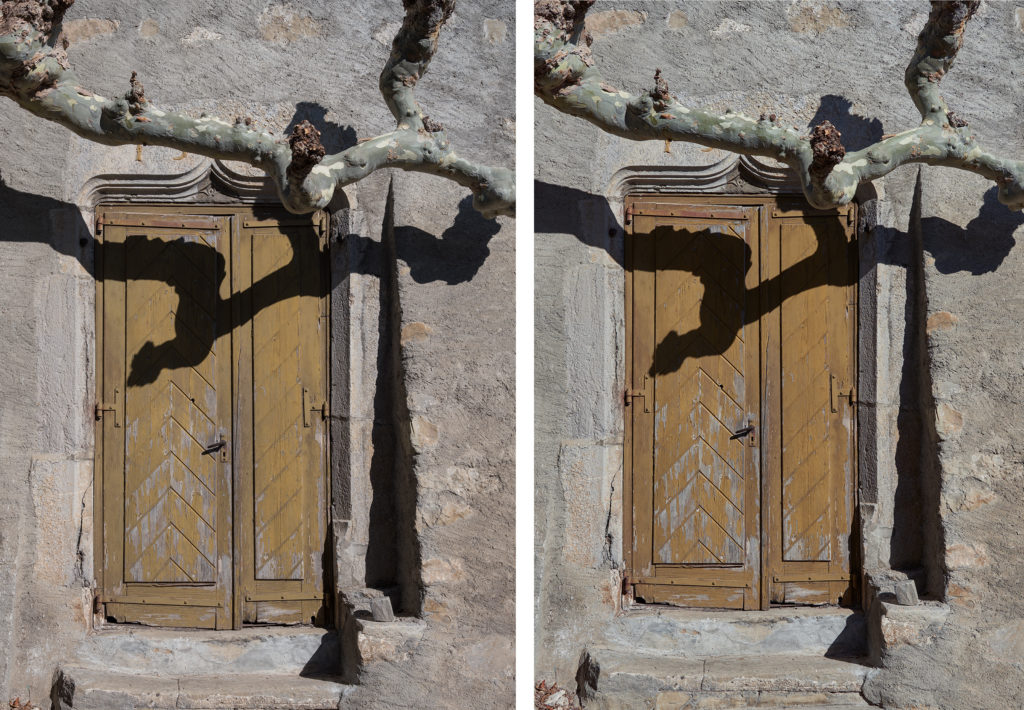
A comparison of the relative sensor size and pixel pitch should give us a hint of the image quality. One may argue that 51 MP is not much more than the 36 MP of the D810 or the 45.7 MP of the D850. But the combination of larger sensels and more sensor real estate should add up to an appreciable advantage. The sensor area is about 1.7 times larger than full frame, with a native image aspect ratio of 4:3 rather than the wider 3:2 ratio of both APS-C and the full frame 35 mm. I have always found 3:2 to be either too wide, or not wide enough.
But in contrast to the widespread myth, there is no such thing as a “medium-format look”; on the same footing that there is no large-format, or 1” look. Using lenses with the same angle of view for the sensor sizes, and the same camera to subject distance, i.e., the same geometric parameters of optics, there is no difference attributable to format size. Any rendering difference has to do with lens design: coverage, focal length, flange distance, and optical corrections.
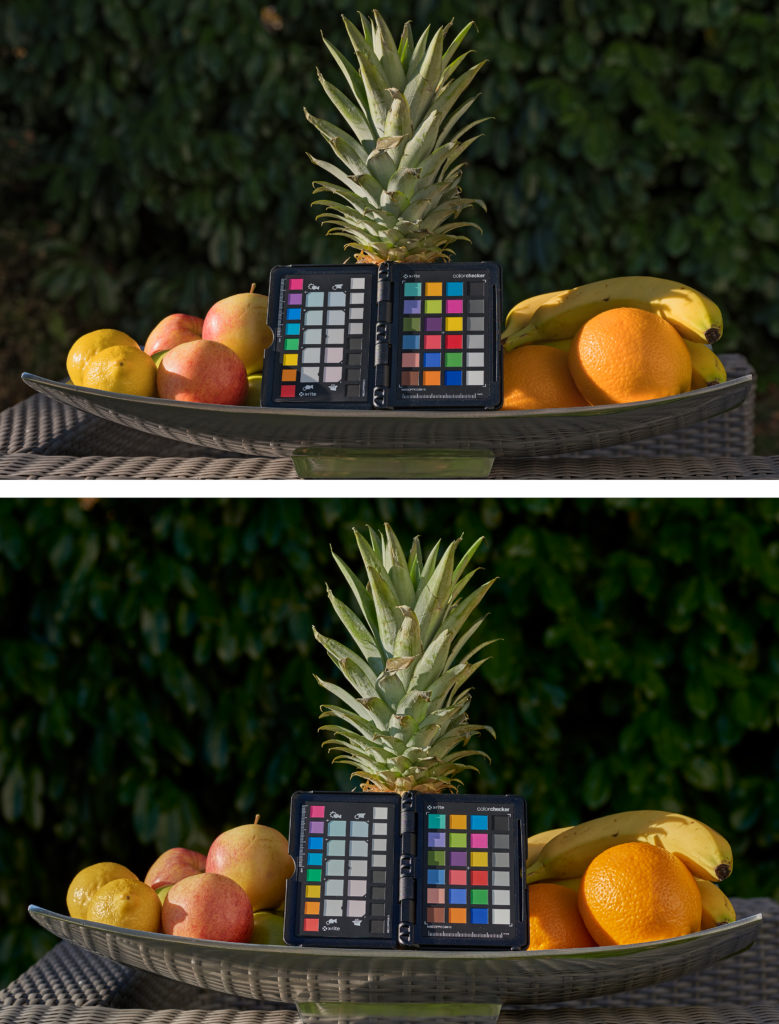
There is of course a difference in the depth-of-field; a 63 mm f/4 lens on the GFX yields a depth-of-field of 7 cm at a subject distance of one meter (portrait shot), comparable to a 50 mm f/3.1 on the full-frame sensor. If the images were to look the same in terms of depth-of-field as well as framing, and you cannot use a tripod to accommodate longer exposure times (or you have moving subjects), the ISO setting on the larger format would need to be increased to produce similarly bright images. But then the same noise level would result for the small and large sensors, because the ISO setting amplifies the noise together with the signal.
Larger sensors allow smaller apertures before the diffraction airy disk becomes larger than the circle of confusion, which is determined by the print size and viewing distance: images from larger sensors do not have to be enlarged as much in order to achieve the same print. The diffraction-limited aperture for the D810 is f/9.2, while it is f/11 for the GFX. Consequently, the diffraction-limited pixel size (defined as the pixel size when the airy disk becomes the limiting factor in total resolution – not the pixel density) increases for larger sensors and for the same depth-of-field. In other words, the diffraction limited depth-of-field is the same for all sensor sizes.
So where is the advantage of the larger sensor? Image quality is not only about resolution. Even more important are the dynamic range, color fidelity, and tonal separation. As we have a higher pixel count and 1.7 times the surface area, there will be a larger signal-to-noise ratio if we are not limited by the photometric exposure, i.e., we can choose longer exposure times using a tripod or because the scene is bright enough. We also have a larger discrete oversampling, which allows a more subtle sharpening and noise reduction when the file is to be printed at the same output size.
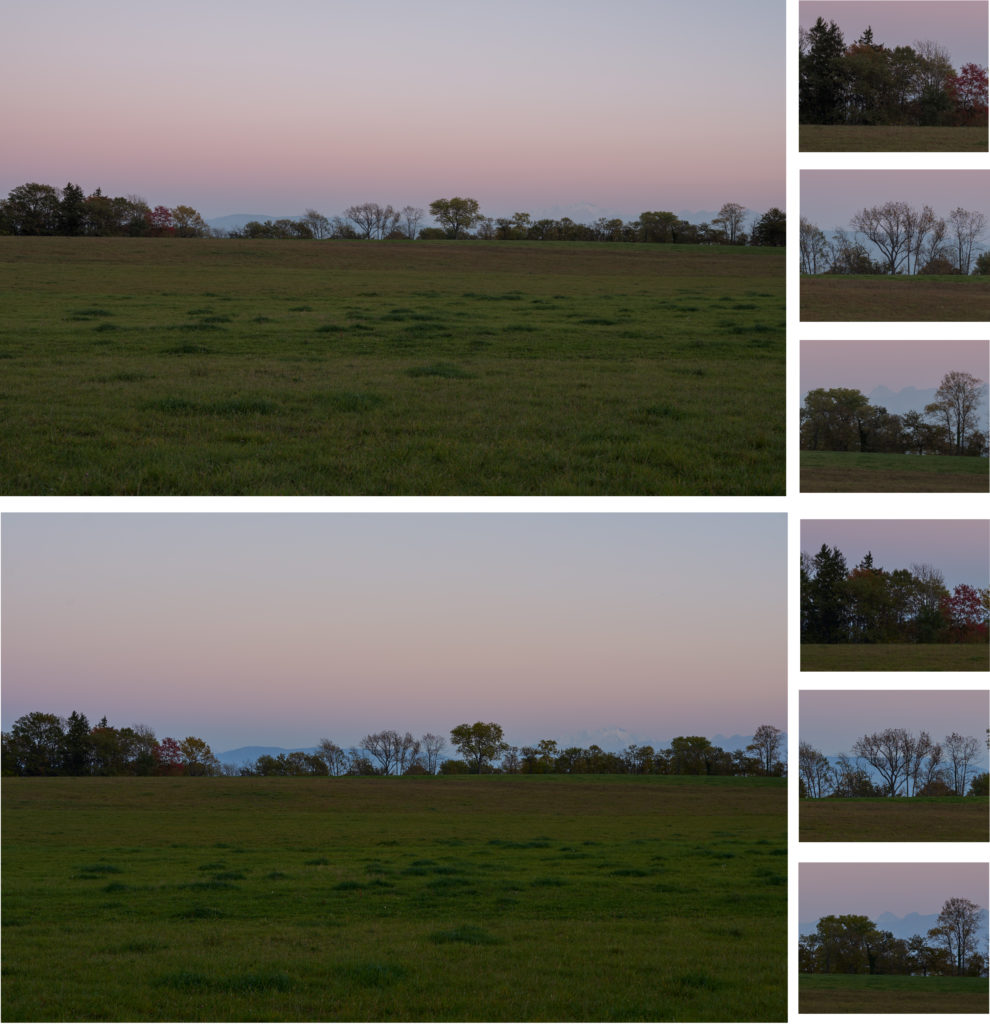
However, the two main factors that influence the ISO performance are sensor (quantum) efficiency (i.e., low light sensitivity) and full-well capacity (increased highlight headroom). The D810 has a lower base ISO of 64, achieved by its higher full-well capacity. This means that it can tolerate more light before it starts clipping the highlight. The ability to record 2/3 stops more light with respect to the GFX (with a base ISO of 100) results in the same dynamic range as is achievable with the larger sensor that can capture 2/3 stops more light at the same f-number and shutter speed.
Enough has been written about the handling of the GFX. In short, everything requires a little getting used to, but except for the autofocus settings I felt no need to read the user’s manual. The GFX is a generation younger than the D810 and it shows: high-res touch-screen with track pad functionality for selecting the focus point, focus peaking, fully electronic shutter, and wifi connectivity; just to name a few of the large feature list.
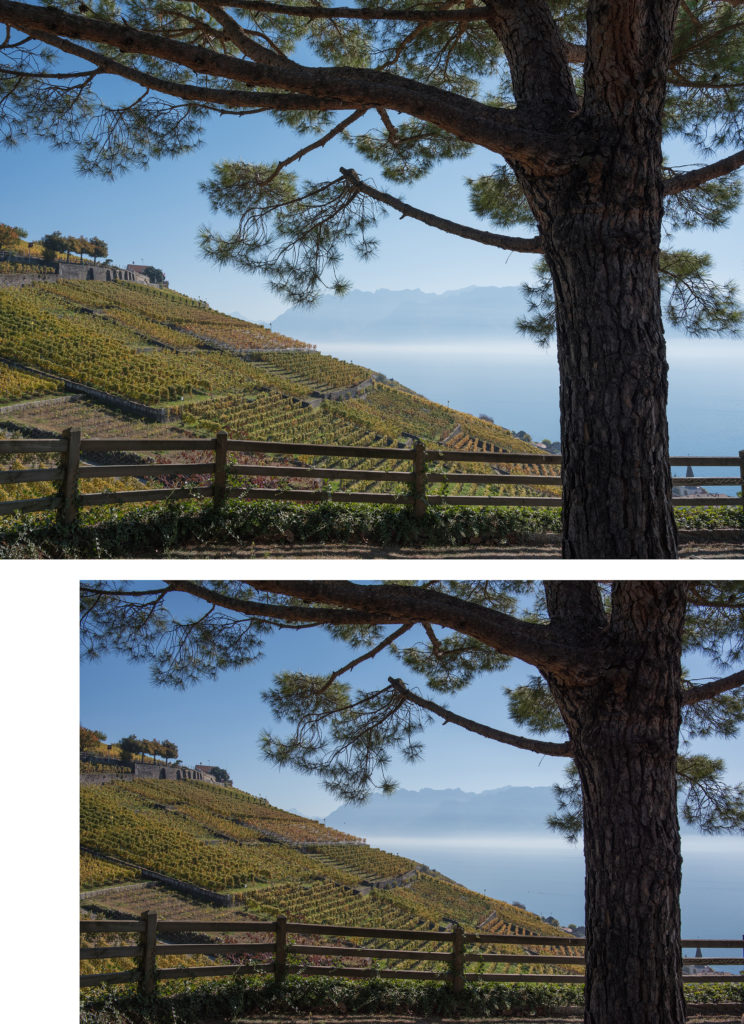
I like the aperture ring, and the traditional shutter speed and ISO dials on the top plate of the GFX. They are convenient when the camera is mounted on a tripod. However, adjusting them when handholding the camera, requires taking the eye away from the viewfinder or the hand away from the shutter button. For this reason the controls, along with the aperture rings on the native lenses, can be locked and assigned to the front/rear command dials.
Unfortunately there is no exposure-compensation wheel. The button and back-dial implementation for exposure compensation is somewhat fiddly. The battery door is located on the left, which is good for horizontal tripod mounting but not so good for the use of L-brackets. It requires a L-bracket in two parts tightened with an included hex key like the one from RRS.
A nice piece of equipment seems to be the tilt adapter, which allows the EVF to be used in different angles. But in practice, I found the tiltable LCD to yield enough flexibility when shooting from the top. With the tilt adapter mounted, the camera does not pack well, it requires considerably more space in the pack and is not that well supported by the padding.
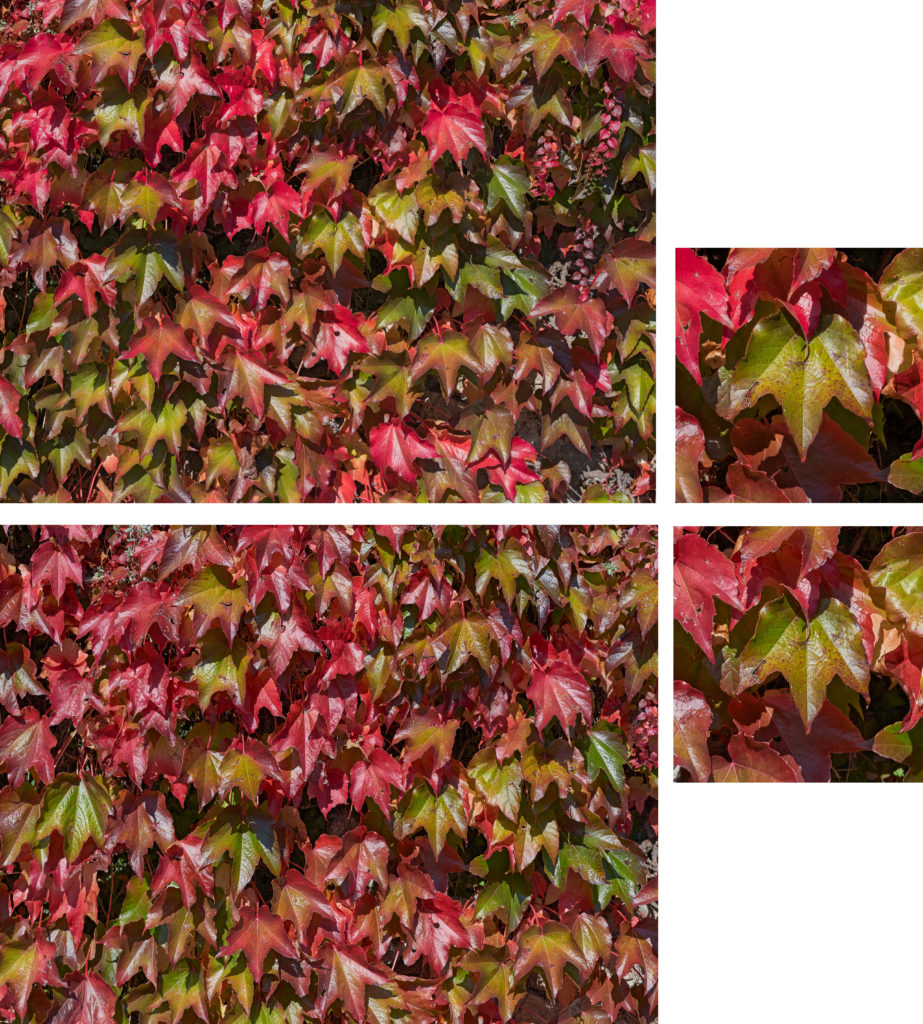
The Fujinon GF 32-64mm f/4 R LM WR (roughly 25-50 mm full-frame equivalent) is a very useful and versatile lens for landscape and architecture photography. When stopped down to f/8, it has excellent resolution all the way to the edges, with very little distortion, low vignetting, and low chromatic aberrations. I don’t know how they did it, perhaps it payed off to limit the zoom-range and the maximum aperture. Or it is easier to design a lens with a large coverage at longer focal lengths. The lenses for smaller formats must have higher resolving power to deal with the smaller pixel pitch, just not across as much of a surface. The GF 32-64 lens blows the socks off the 24-70 offerings for the f-mount (and that includes the expensive Nikons as well as the alternatives from Sigma and Tamron). You must use the new Nikon 28 f/1.4 E or the 45 PC-E at 5.6 to achieve comparable results at these focal lengths; the Nikon 50 f/1.4 G or 50 f/1.8 G won’t be able to compete either. However, there is a slight misalignment (either of a lens element, or of the sensor and the flange), with the images being sharper on the left than on the right. I see a similar behaviour with the Nikon 28 f/1.4 E on the D810, which on its weak side at f/2 still outperforms the 24-70 f/2.8 G at f/5.6. So we are nit-picking at a very high level.
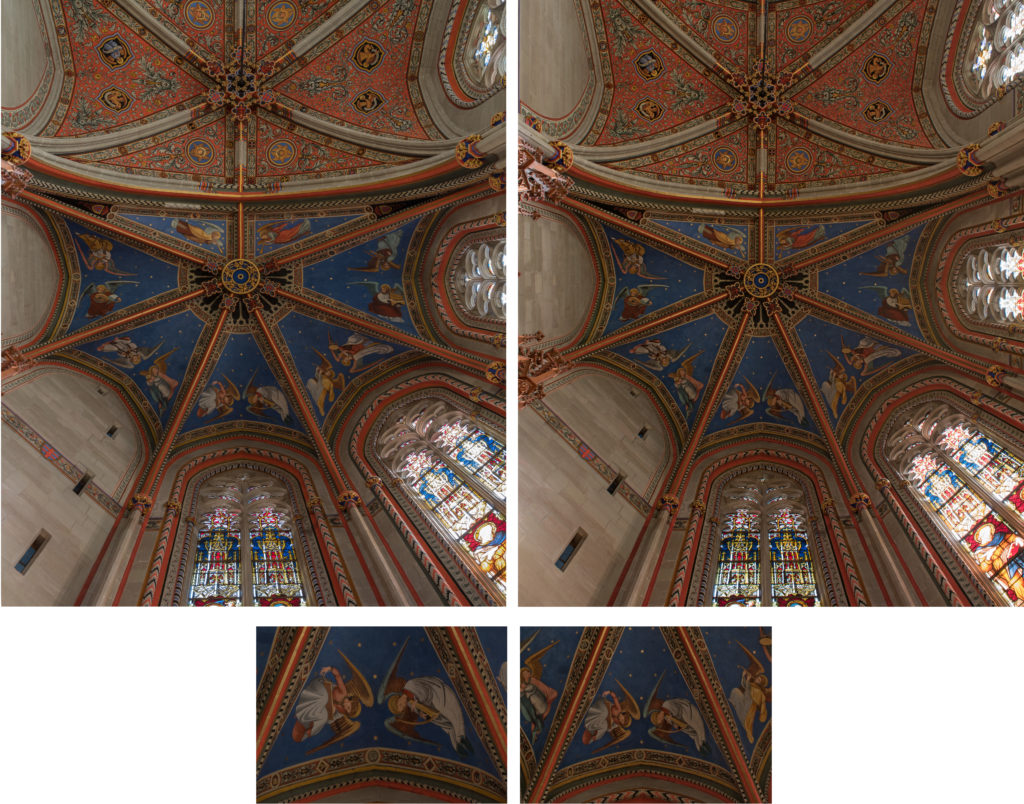
Check out these charts for the comparison of the dynamic range versus ISO setting. Above ISO 200 the GFX has a somewhat (2/3 of a stop) larger dynamic range and indeed the image of the ivy wall (above) points toward a smoother highlight roll-off for the GFX. However, there is not much difference at base ISO as the fruit basket comparison shows. The Nikon D810 files will hold up to post-processing just as well, if there is enough light or tripod mounting to allow for 2/3 of a stop longer exposure time. As the D850 uses a more modern BSI sensor design it is to be expected that any remaining gap will be closed even further.
Above ISO 1600 the GFX relies on ISO invariance* of the sensor and readout electronics. The signal is no more pre-amplified but the image is simply underexposed followed by a heavy shadow recovery in the RAW converter. In this way the highlight headroom is maintained at about 8 stops. But this can be done as well with the Nikon by setting the camera to ISO 1600 and underexposing by a stop or two.
All GFX images were processed in Lightroom and the Nikon images in CaptureOne 9, for both system in the converter’s default settings. An unfair comparison? Perhaps unscientific but not unfair, because the final images depend on the sensor, lenses, and complete processing chain. And if PhaseOne have decided not to support third-party medium format, this simply becomes a factor in the systems performance.
The autofocus system of the GFX features a large number of focus points, well spread over the sensor area. The GFX offers two ways to the move the autofocus point: a joystick and the touchscreen. Zooming, setting the focus point, navigating the camera menu, playing back images, etc., can all be done without noticeable lag, which is quite remarkable for a medium format camera. On the other hand, the GFX has a relatively simple contrast-detect autofocus system, not comparable with the modern mirrorless cameras from Olympus and Sony.
The GFX body and the lens don’t feature vibration reduction. The combo therefore does not extend the shooting envelope, as does the highly stabilized Olympus M4/3 tested here. Noise levels are perhaps down by one stop, which is needed to obtain the same depth of field. But just like the D810, the GFX is best mounted on a sturdy tripod.
The samples below explore the best quality possible from both the GFX and the Nikon D810 in typical shooting situations, handheld in low-light, high contrast situations. The problematic lack of focusing precision that one can expect from the Fujifilm GFX and the shutter shock of the Nikon DSLR made it impossible to do apples to apples comparisons. I therefore selected the best images from a set of about 10 each.
When enabling the PRE-AF and Rapid AF modes, the GFX keeps hunting when the shutter release is half pressed, giving erratic results and making images appear as if the lens had a serious focus-shift issue**. Decoupling AF-on from the shutter button (setting SHUTTER AF – off), and assigning it to the AF-lock button (AE/AF-LOCK MODE – on when pressing) turned out to be a solution. From thereon all my images where correctly focused.
I have my D810 configured for back-button focusing (continuous auto-focus is enabled if, and only if, the AF-ON button is pressed). From the user’s manual of the GFX it isn’t clear if this will be possible with the Fuji also. Why the user’s manual of 6000 $ camera doesn’t contain any useful information is beyond me. Instead it states that the battery-chamber cover should be closed after inserting the battery. Who’d have thunk?
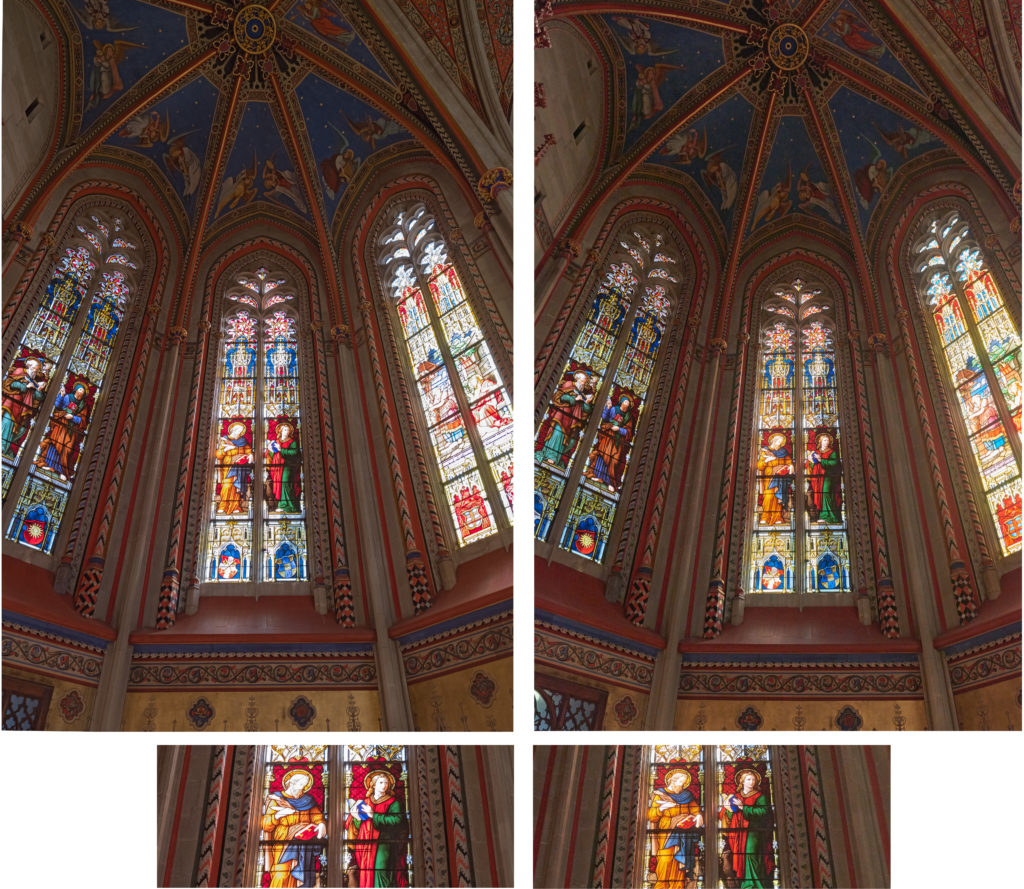
Just like to the shootout between the D800E and the Mamiya/Leaf Credo that I did in 2014, the results of the GFX leaves me somewhat underwhelmed. If I weren’t so far invested into the FF Nikon system I would equip my wife with a M4/3 system (and use it myself for reportage and low light) and treat me to a GFX for landscape and architecture. Both systems have sensors of 4:3 aspect ratio that I strongly prefer to 3:2.
Sure, there is an edge in the image quality, noteworthy achievable with a medium-range zoom lens playing in the league of the (expensive) Nikon 28 mm f/1.4 E on the D810 body. But with the inferior autofocus system and the lack of image stabilization the shooting envelope is not extended. Both cameras are best mounted on sturdy tripods. And in these situations focus stacking, exposure blending, and stitching have a far larger effect on the image quality than the sensor size. The GFX is not an action camera either, so there remains portraiture under studio lighting conditions – but that’s not what I do for a living.
But the results show where technology is heading. The sweet spot for M4/3 is at about 24 MP, which limits the print size (according to my quality criteria) to A3. I expect not much anymore in terms of image quality unless we see curved, Foveon-type, or EMCCD sensors.
The incremental improvements in the full frame cameras will be in connectivity, burst rate, image stabilization, and pixel-shift modes, as well as a further reduction in size and weight (if this makes sense at all, given the size of the f/1.4 and f/2.8 lenses). And although higher pixel counts will reduce digital artefacts by sheer oversampling, there will be very limited improvement in resolution, even with the best lenses. We will also (soon?) see CMOS sensors with global shutter that paves the way to very short exposure times without the rolling shutter artifacts.
And medium format? The 100 MP sensor in the PhaseOne points into the direction. A GFX Mark II with an 80 MP sensor is very well conceivable. If only they added an autofocus system as in the Olympus OM-D, pared it with in-body vibration reduction, and made it in chrome as the X1D – and I had a spare kidney to sell. SR
Update 10.11.2017: Sony has announced three new medium format sensors for 2018; the IMX211 and IMX461 with 100 MP and the IMX411 with 150 MP. It is therefore obvious that a GFX Mark II (by late 2018 or early 2019) will be differentiated even more with respect to the FF offerings. Then it only remains to be seen if the lenses can keep up with 100 MP. For the relatively low price there can’t really be a lot of quality control, and a camera with this resolution will be merciless to any misalignment above the micrometer level.
* The main sources of noise are capture noise (photon shot noise, dark – thermal – noise, and photo-response non uniformity), readout and amplification noise, and discretization error due to the analogue to digital conversion (ADC). The dominant noise at low ISO arises from the readout electronics and gain amplifier, less from the ADC, and a negligible contribution from the capture noise. Low noise readout electronics and amplifiers therefore result in a higher dynamic range (higher S/N) at low ISO settings.
Capture noise increases with the ISO setting because it is amplified by the gain amplifier (the ISO setting does not increase the quantum efficiency of the sensor). At values above ISO 1600 the capture and readout noise becomes much larger than the noise arising from circuit components downstream of the gain amplifier and discretization error resulting from the ADC. Shooting RAW it makes no more sense to increase the ISO setting, because its main effect is to compress the highlight headroom (pushing signals beyond the recordable value of 16383 for a 14-bit processing engine). Too high ISO settings and resulting loss of highlight headroom will reduce star colors in astro-photography, or blow the highlights in night cityscapes, the highest dynamic range situations in photography.
There is another problem when looking at S/N and dynamic range: The noise characteristic is modified at various stages (demosaicing, color and gamma correction, and jpeg compression) of the imaging pipeline. An additive white Gaussian noise (AWGD) model is no more adequate after the data have gone through the RAW converter. The useful photographic dynamic range is therefore lower than the engineering dynamic range derived from the AWGD.
** This issue might have been addressed in the recent firmware update but I recommend checking this carefully.
Paul
8 Jun 2018I just love reading your blog, very scientifically informative.